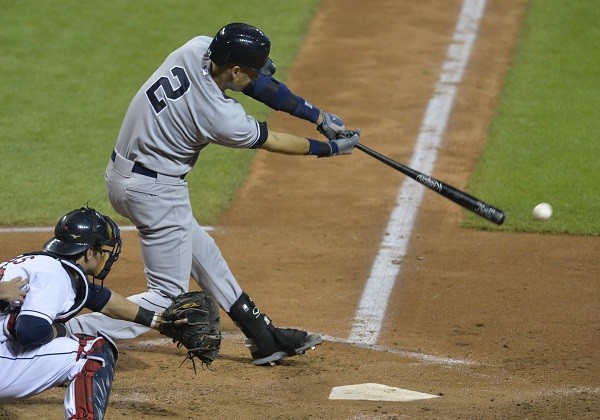
If he cannot, then he should immediately move to second base, and efforts to trade Gleyber Torres should be accelerated. First, is the issue of whether or not Volpe can play shortstop at the big league level. The choice between these two should be based on a handful of considerations. The shortstop question really comes down to Peraza and Volpe. If the Yankees believe Volpe cannot stick at shortstop at the big league level, then it makes sense for him to begin working at the position, probably second base, they think will be his eventual landing place, but given that he only played shortstop in the minors last year, there is little reason to think the Yankees see him as anything other than a shortstop. A player with his potential should not be spending his time learning a position, like leftfield or second base, if he will only play there for a few months. Moving him around to get his bat in the lineup is alluring, but in the long run the small benefit from that is not worth the potential damage to Volpe’s career.

This means that if the Yankees see Volpe as their future shortstop, then by midseason, unless he is hurt or takes a big step backwards in the minors, he should be in that role. Second tier players, like Cabrera and Kiner-Falefa should be moved around to facilitate what is best for Volpe, not the other way around. When you have a prospect like Volpe, there is a danger in moving him around too much, not being clear on his role or otherwise being inconsistent. However, Kiner-Falefa is not overpaid by the standards of baseball in general, so exploring a trade netting either prospects or possibly a left fielder is the best way to address this problem. Space under that cap is valuable and using even a few million of that on a position player who the team does not feel can be a starter is a mistake. Signing Kiner-Falefa also pushes the Yankees closer to the top salary cap threshold of $293 million. With the emergence of Cabrera, and the presence of DJ LeMahieu on the team, the Yankees do not need another versatile backup infielder-and that is the role for which Kiner-Falefa is best suited. The money may not be a lot to pay Kiner-Falefa if he is the team’s starting shortstop, but it was apparent in the 2022 postseason that the Yankees do not have much confidence in him for that role. First, signing Isiah Kiner-Falefa to one year $6 million contract this offseason was a mistake. If you or someone you know has a gambling problem, contact 1-800-GAMBLER.There are several things I have seen and heard from the Yankees thus far that are concerning. Must be 21+ to gamble, please wager responsibly.

Not all offers available in all states, please visit sportsbook websites for the latest promotions for your area. In seven games this season, the 26-year-old has a 3.90 ERA and 8.1 strikeouts per nine innings, while allowing a batting average of.In his last time out on Wednesday, the right-hander threw 6 2/3 innings against the Los Angeles Angels, allowing one earned run while surrendering four hits.Bradish (2-1 with a 3.90 ERA and 29 strikeouts in 32 1/3 innings pitched) makes the start for the Orioles, his eighth of the season.Orioles pitchers combine to rank 16th in baseball in home runs allowed (56 total, 1.2 per game).The Orioles have a 4.04 team ERA that ranks 12th across all league pitching staffs.The pitching staff for the Orioles has a collective 9.2 K/9, the ninth-best in MLB.


 0 kommentar(er)
0 kommentar(er)
